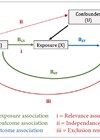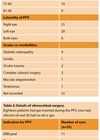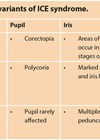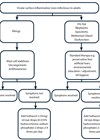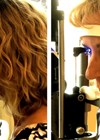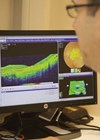Ophthalmology
Ophthalmology in a War Zone: an interview with Dr Volodymyr Melnyk
It is now nine months since the full-scale Russian invasion of Ukraine commenced in late February 2022, with Putin announcing a “special military operation” to “denazify and demilitarise” Ukraine. The rest of the world, however, saw it for what it...
Exploiting nature’s randomised trials of eye disease
Confounding and reverse causation in observational ophthalmic epidemiology Traditional observational studies are inherently limited in establishing a causal effect of an exposure on an outcome of interest. One fundamental limitation is confounding, whereby causation is incorrectly attributed to a third...
Does vitrectomy increase the risk of glaucoma? A retrospective review from a UK hospital
The authors investigate what proportion of patients undergoing pars plana vitrectomy subsequently developed ocular hypertension or a diagnosis of glaucoma. A systematic review carried out in 2017 including seven studies found that there is evidence that pars plana vitrectomy (PPV)...
Irido-corneal endothelial syndrome: an overview
Irido-corneal endothelial (ICE) syndrome is a rare group of eye related disorders that constitute three different clinical entities: Chandler syndrome (CS), essential / progressive iris atrophy and iris naevus / Cogan-Reese syndrome. ICE syndrome is sporadic in its presentation as...
What’s new in glaucoma? Clinical trials drive practice changes, surgical advancements gather pace
Rod McNeil reviews the latest developments in the treatment of glaucoma in the UK. Primary open-angle glaucoma (POAG), which accounts for over two-thirds of all glaucoma cases, has an estimated UK prevalence in 2017 of approximately 2% of people over...
The implementation of postoperative day 1 vitrectomy telephone follow-up consultations
In this pre-COVID-19 study, the authors argue that some follow-up consultations can be done by telephone without compromising patient safety. Thirty years ago, a study by Isernhagen et al. [1] found that 52% of patients required some form of unexpected...
The science of glaucoma management: highlights of the 2020 Moorfields International Glaucoma Symposium
Held earlier this year, the 12th annual Moorfields International Glaucoma Symposium provided a forum for advanced clinical and scientific exchange in glaucoma management. The authors describe the key presentation themes and debates, highlighting specific topics of interest to glaucoma specialists....
Thinking outside the box – adapting to the COVID-19 lockdown
How can we avoid further delays to follow-up in glaucoma patients? The author asks if there is a socially distanced way to check IOPs in those at high risk of losing vision. Glaucoma is an asymptomatic condition. Loss of the...
Forward-tilt technique for intraocular pressure measurement in upgaze
The authors suggest a technique to improve the accuracy of measuring IOP in upgaze using Goldmann applanation tonometry. Graves’ ophthalmopathy, also known as thyroid eye disease, is an autoimmune inflammatory condition affecting the orbit and periorbital tissues [1]. It was...
Make eye drops part of your Ramadan routine: wake, drops, eat, pray, done!
During the holy month of Ramadan, Muslims fast during daylight hours, abstaining from food and drink between dawn and sunset each day. Ramadan 2020 starts on 23 April and ends around 23 May, depending on the first appearance of the...
Coming to terms with AI
A machine might be called intelligent if its response to questions could convince a person that it was human, a test proposed by Alan Turing in 1950 [1]. The author considers potential applications of artificial intelligence (AI) using machine learning...
Sharing best practice and landmark evidence in glaucoma care
Evolving technology, best practice and landmark evidence in glaucoma care were reviewed by an international expert faculty in session presentations and debates during the 11th Moorfields International Glaucoma Symposium 2019. The authors were meeting chairs and provide an overview of...



